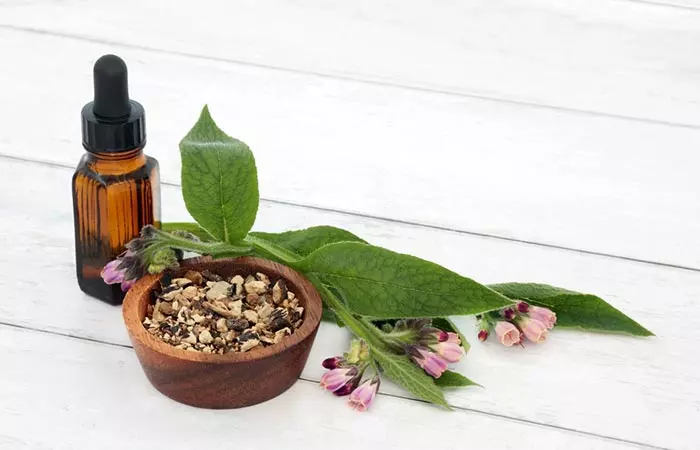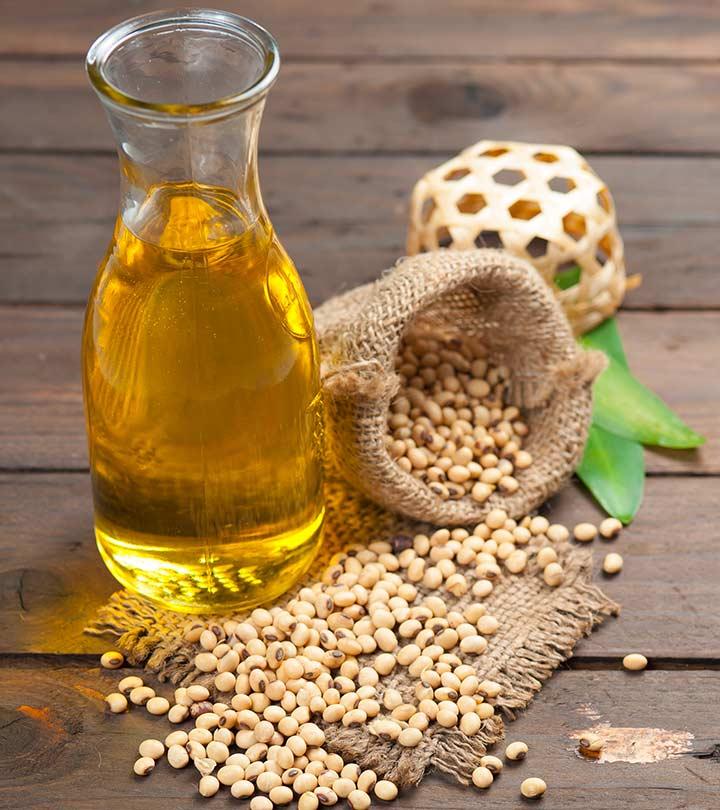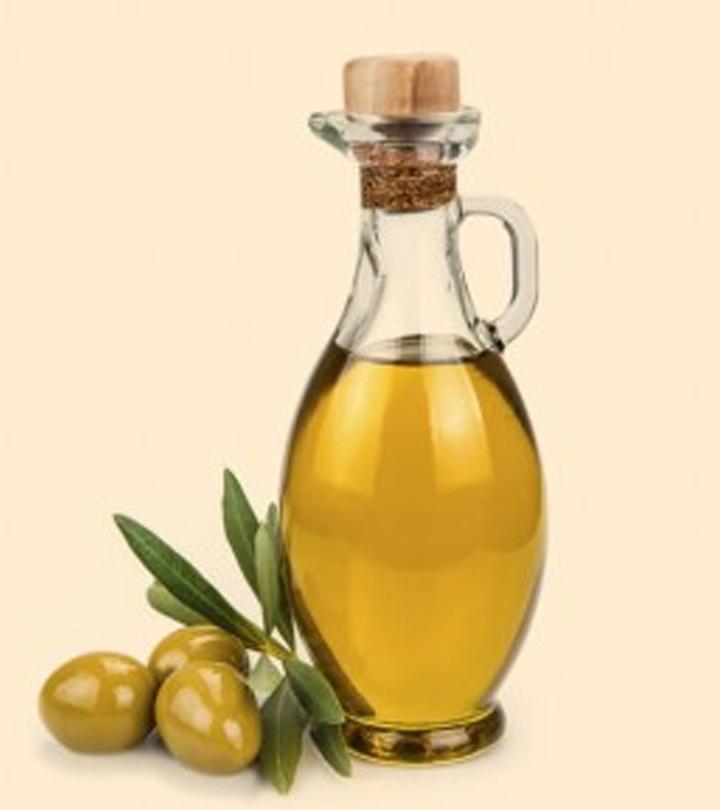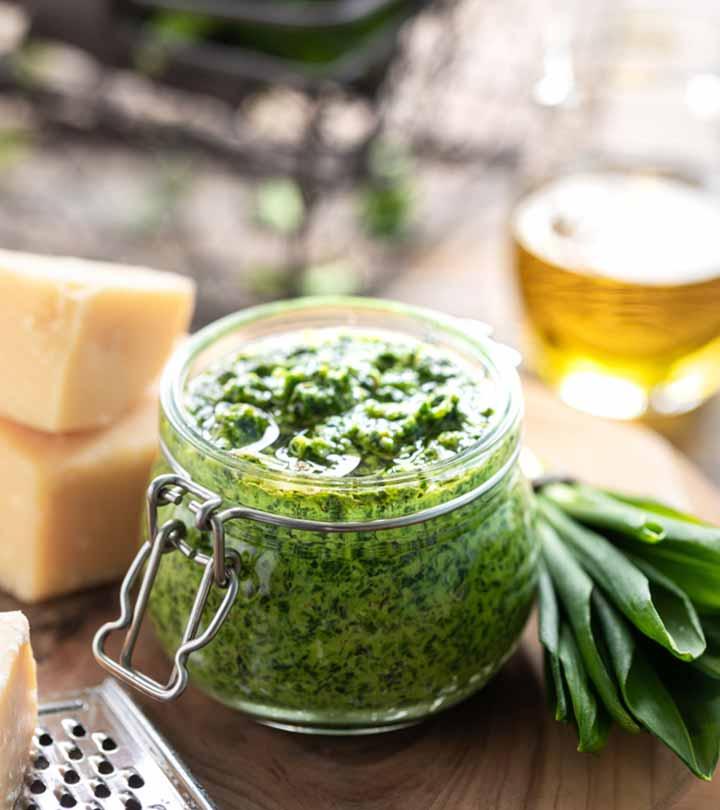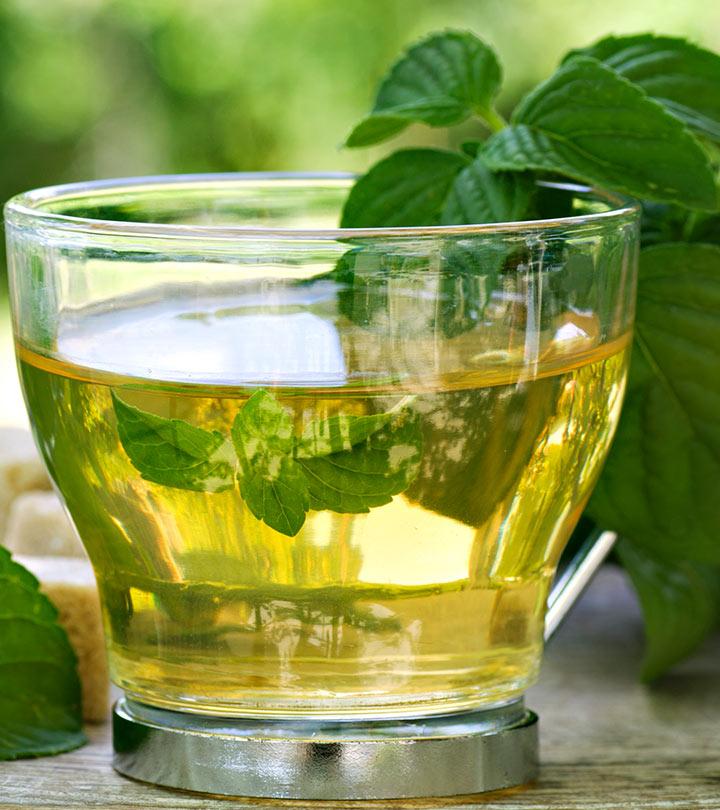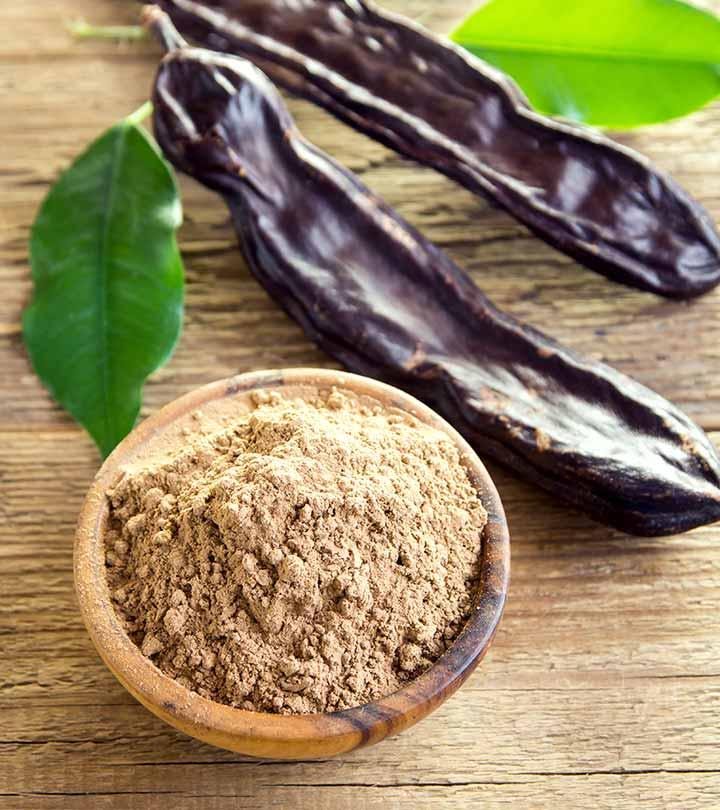4 Benefits Of Comfrey, How It Works, & Possible Side Effects
Say goodbye to pain naturally as you soothe and heal inflamed, broken skin effectively.
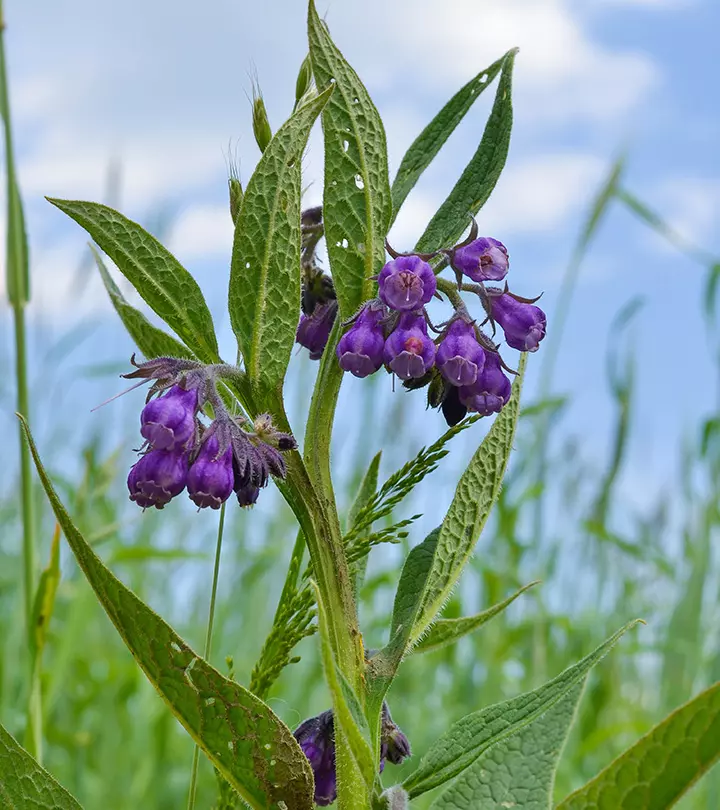
Image: Shutterstock
Comfrey (Symphytum officinale) is also called boneset or knitbone (as it is used in folk medicine for setting fractured bones). Comfrey benefits can be attributed to its phytochemicalsi These bioactive chemical compounds are antioxidants found in plants and are thought to be good for human health. . It is a flowering herb, whose roots and leaves possess anti-inflammatory and analgesic effects. Comfrey may help treat various health and skin issues, osteoarthritis symptoms, sprains, and fractures. In this article, we further understand the benefits of comfrey, and its side effects. Read on.
 Know Your Ingredient: Comfrey
Know Your Ingredient: ComfreyWhat Is It?
A flowering plant with wound-healing properties, bearing purplish bell-shaped flowers.
What Are Its Benefits?
Soothes and heals inflammation and broken skin, promotes skin rejuvenation and may help treat symptoms of osteoarthritis and sprains.
Who Can Use It?
All except those who are breastfeeding.
How Often?
Topically, not more than 6 weeks in small quantities.
Caution
May cause liver damage and liver cancer as it contains pyrrolizidine alkaloids that are toxic to humans. Consult a doctor before taking it.
In This Article
What Is Comfrey?
Comfrey is a flowering plant belonging to the Boraginaceae family. It has medicinal uses and has been a part of many herbal remedies for centuries. The ancient Greeks and Romans used comfrey extracts to heal wounds, set broken bones, and stop heavy bleeding. There are several medicines made of comfrey like expectorants ,demulcents, and even vulnerary. Keep reading to understand how and why it may benefit your health.
How Does Comfrey Work?
Comfrey leaf and root extracts contain allantoin and rosmarinic acid, making them excellent anti-inflammatory, analgesic, and wound-healing agents (1). The chemical constituents of comfrey extract reduce redness and stimulate cell proliferationi It is the procedure by which the number of cells increases as a result of cell growth and cell division. and collagen production to heal wounds when applied topically.
 Fun Fact
Fun FactThe next section explores other skin and health benefits of comfrey. Keep scrolling.
Skin And Health Benefits Of Comfrey
1. Improves Skin Health
Creams and ointment containing comfrey are often used to soothe and heal cracked or painful nipples. Its roots contain allantoin (0.6-4.7%) and rosmarinic acid (up to 0.2%) (1), (2).
Allantoin protects the skin and keeps it smooth. It promotes wound healing by stimulating the fibroblastsi Large, flat, elongated cells that contribute to the formation of connective tissue, and secrete collagen. to produce collagen (3). Aerial parts of comfrey (flowers and leaves) also have wound-healing properties (4). They promote skin cell regeneration and may help treat blunt traumas and injuries (5), (6). Allantoin has anti-inflammatory properties that reduce skin inflammation and calm irritated skin (7). It maintains the skin hydration levels and reduces the signs of aging, making it a perfect ingredient for your skincare routine (8).
The anti-inflammatory effects of rosmarinic acid reduce UVB-induced erythema (redness), inflammation, and leg ulcers (8). Topical application of aqueous extracts of comfrey root can minimize skin irritation (9), (10). A study involving 161 patients found that topical application of comfrey root cream could treat pressure ulcers (11).
2. Lowers Back Pain
One of the most studied comfrey benefits is its usage for relieving back pain. Massaging comfrey root extract can help relieve upper and lower back pain. A study conducted on 120 patients with acute back pain found applying comfrey cream three times a day beneficial in pain management (12). Comfrey root ointment provides faster pain relief and can also reduce myalgia (soreness and muscle ache) (13).
A study conducted by the Charles University in Prague on 215 patients with pain states that topical comfrey root cream has anti-inflammatory and analgesic effects that can treat myalgia (14). It also works well in combination with methyl nicotinate for back pain management (15).
3. Improves Ankle Sprain
The therapeutic properties of comfrey root ointment can reduce short-term symptoms related to an ankle sprain and speed up the healing process(16). A study conducted on 203 patients with acute ankle sprain found that a high concentration of comfrey could decrease swelling and pain (17).
Comfrey cream is more effective than nonsteroidal anti-inflammatory drugs for treating ankle sprains (18). Moreover, a clinical trial suggested that plant-based ointments (including comfrey ointment) are safer and effective than Diclofenac gel (19).
4. Reduces Osteoarthritis Symptoms
Osteoarthritis (a type of degenerative joint disease) affects about 27 million adults in the US (20). Topical application of comfrey extract was found effective in regulating pain and improving knee mobility (21).
A study conducted by the University of the SunshineCoast, Australia, involving 220 people with knee osteoarthritis, found that topical comfrey extract gel improved pain without any side effects (22).
You can also try a blend of comfrey root extract and tannic acid creams(23). Using this blend three times a day for six weeks can relieve stiffness and knee pain associated with osteoarthritis and improve your bone health.
 Trivia
TriviaHerrick Kimball, a YouTuber, shared how he used comfrey leaves to treat scratched eyes. He created a comfrey poultice using fresh comfrey leaves and applied it on his eyes for half an hour. In one his vlogs, he recounts its immediate effects: “I lay there for one-half hour, and then I took that comfrey off my eye. I opened my eyes, and it was like I had never had anything wrong with it. It was 100 percent cured (i).”
Oral consumption of comfrey is not recommended. When using topical comfrey, be extremely cautious so that it does not get into your mouth. Otherwise, it may cause serious side effects.
Are There Any Side Effects Of Comfrey?
Comfrey contains pyrrolizidine alkaloids (toxic compounds) and may cause liver damage, liver cancer, respiratory issues, disrupt digestive health, and in some cases even cause death (24), (25), (26). This is why the Food and Drug Administration has banned oral comfrey products.
Avoid using topical comfrey products for a longer time as there are chances that it may get absorbed through the skin. Also, never apply comfrey cream on open wounds.
Avoid using topical comfrey if you are breastfeeding as it may expose the infant to toxic compounds (25). Hence, always use comfrey creams and ointments under a doctor’s supervision and never self-medicate. So it is recommended to consult your doctor before using it.
Since comfrey may cause hepatotoxicity (liver damage), ensure you are using it in the right dosage and in limited amounts. Check out the section below to learn more.
Comfrey Dosage
Oral: Oral consumption of comfrey is highly unsafe because of its hepatotoxic properties.
Topical: Although the dosage for topical application varies slightly and is product-specific, the recommended amount is 10-100 mg/g for 4-6 weeks/year for preparations with comfrey (12).
However, it is highly advised to consult your healthcare provider before using any topical preparations containing comfrey, as a few individuals might experience skin irritation or discomfort post-application of these preparations.
Infographic: 4 Benefits Of Comfrey You Should Know
Comfrey is known for its wound-healing properties and is rich in phytochemicals. It is often found in many pain relieving creams and also works well in treating sprains. While there are many benefits of comfrey, we have listed the most effective ones in the infographic below. Check it out for more information.

Illustration: StyleCraze Design Team
The benefits of comfrey can be attributed to its phytochemical content. Comfrey improves skin health, relieves upper and lower back pain, treats ankle sprain, and reduces osteoarthritis symptoms. But the oral consumption of comfrey is not recommended, and caution is highly advised while using it topically. Otherwise, it may cause serious side effects like liver damage, liver cancer, and death. Usage of comfrey by breastfeeding women is proven to be toxic to the infant. However, taking it as prescribed helps in reaping its benefits.
Frequently Asked Questions
Can comfrey heal tendons?
Yes. Comfrey has anti-inflammatory and analgesic effects that help heal inflamed tendons.
Is comfrey oil good for hair?
Yes. Anecdotal evidence suggests that comfrey oil may help boost hair growth and due to the presence of beneficial gamma linoleic acid and omega-6 fatty acids.
How long does comfrey take to work?
It may take about a couple of weeks to show results. There is anecdotal evidence that comfrey ointment can reduce swelling, tenderness, and pain in sprains when applied for as long as 2 weeks.
Is comfrey good for varicose veins?
Possibly. Applying comfrey-based oil or creams may help relieve pain related to varicose veinsi Gnarled, swollen veins, most frequently observed in the legs and feet, and usually triggered by weakened vein walls and valves. due to its analgesic properties.
Does comfrey tighten skin?
Possibly. Comfrey extracts contain allantoin, a beneficial compound that helps boost collagen production and may tighten skin.
Is comfrey the same as borage?
Possibly. Applying comfrey-based oil or creams may help relieve pain related to varicose veins due to its analgesic properties.
What does comfrey taste like?
It is not recommended to taste or consume comfrey as it contains toxic compounds (pyrrolizidine alkaloids) that may harm your health.
Is comfrey poisonous to dogs?
Yes, if consumed in excessive amounts. The toxic alkaloids present may lead to liver damage in dogs.
Key Takeaways
- Comfrey is a flowering plant with high phytochemical content. The leaves and roots of this herb have analgesic and anti-inflammatory properties with many therapeutic benefits.
- Comfrey may improve skin health, reduce back pain, help heal an ankle sprain, and relieve the symptoms of osteoarthritis.
- However, oral consumption and long-term use of comfrey are not recommended as it contains toxic compounds called pyrrolizidine alkaloids.

Image: Stable Diffusion/StyleCraze Design Team
Discover the amazing benefits of comfrey! Learn how this powerful herb can enhance your health and well-being. Watch this video now and unlock the secrets of comfrey!
Personal Experience: Source
StyleCraze's articles are interwoven with authentic personal narratives that provide depth and resonance to our content. Below are the sources of the personal accounts referenced in this article.
i. Comfrey Leaves Healed My Eye!https://www.youtube.com/watch?v=zi797venK9o
References
Articles on StyleCraze are backed by verified information from peer-reviewed and academic research papers, reputed organizations, research institutions, and medical associations to ensure accuracy and relevance. Read our editorial policy to learn more.
- Comfrey
https://www.ncbi.nlm.nih.gov/books/NBK501773/ - Drugs and Lactation Database
https://www.ncbi.nlm.nih.gov/books/NBK501773/ - Profile of wound healing process induced by allantoin
https://pubmed.ncbi.nlm.nih.gov/20877959/ - Wound healing effects of a Symphytum herb extract cream (Symphytum x uplandicum NYMAN: ): results of a randomized controlled double-blind study
https://pubmed.ncbi.nlm.nih.gov/18157595/ - Epidermal Regeneration Induced by Comfrey Extract: A Study by Light and Electron Microscopy
https://pubmed.ncbi.nlm.nih.gov/32683369/ - Tolerability and effectiveness of an antitrauma cream with comfrey herb extract in pediatric use with application on intact and on broken skin
https://www.ncbi.nlm.nih.gov/pmc/articles/PMC6363250/ - An investigation into multifaceted mechanisms of action of allantoin in wound healing
https://www.jaad.org/article/S0190-9622(17)30663-1/fulltext - Efficacy and Safety of an Anti-aging Technology for the Treatment of Facial Wrinkles and Skin Moisturization
https://www.ncbi.nlm.nih.gov/pmc/articles/PMC5774901/ - Medicinal plants used in treatment of inflammatory skin diseases
https://www.ncbi.nlm.nih.gov/pmc/articles/PMC3834722/ - Comparative Study of the Biological Activity of Allantoin and Aqueous Extract of the Comfrey Root
https://pubmed.ncbi.nlm.nih.gov/25880800/ - Efficacy and safety of symphytum herb extract cream in the treatment of pressure ulcers
https://pubmed.ncbi.nlm.nih.gov/24048776/ - Comfrey root: from tradition to modern clinical trials
https://www.ncbi.nlm.nih.gov/pmc/articles/PMC3580139/ - Efficacy and safety of comfrey root extract ointment in the treatment of acute upper or lower back pain: results of a double-blind randomised placebo controlled multicentre trial
https://pubmed.ncbi.nlm.nih.gov/19460762/ - Topical symphytum herb concentrate cream against myalgia: a randomized controlled double-blind clinical study
https://pubmed.ncbi.nlm.nih.gov/16510384/ - Combination of Comfrey Root Extract Plus Methyl Nicotinate in Patients with Conditions of Acute Upper or Low Back Pain: A Multicentre Randomised Controlled Trial
- METABOLISM GENOTOXICITY AND CARCINOGENICITY OF COMFREY
https://www.ncbi.nlm.nih.gov/pmc/articles/PMC5894094/ - Efficacy and safety of topically applied Symphytum herb extract cream in the treatment of ankle distortion: results of a randomized controlled clinical double blind study
https://pubmed.ncbi.nlm.nih.gov/15638067/ - Effect of a blend of comfrey root extract (Symphytum officinale L.) and tannic acid creams in the treatment of osteoarthritis of the knee: randomized, placebo-controlled, double-blind, multiclinical trials
https://www.ncbi.nlm.nih.gov/pmc/articles/PMC3259911/ - Comfrey extract ointment in comparison to diclofenac gel in the treatment of acute unilateral ankle sprains (distortions)
https://pubmed.ncbi.nlm.nih.gov/18193693/ - The Epidemiology and Impact of Pain in Osteoarthritis
https://www.ncbi.nlm.nih.gov/pmc/articles/PMC3753584/ - Natural Products as Sources of Novel Drug Candidates for the Pharmacological Management of Osteoarthritis: A Narrative Review
https://www.ncbi.nlm.nih.gov/pmc/articles/PMC6824629/ - Topical herbal therapies for treating osteoarthritis
https://pubmed.ncbi.nlm.nih.gov/23728701/ - Effect of a blend of comfrey root extract (Symphytum officinale L.) and tannic acid creams in the treatment of osteoarthritis of the knee: randomized placebo-controlled double-blind multiclinical trials
https://pubmed.ncbi.nlm.nih.gov/22014903/ - The efficacy and safety of comfrey
https://pubmed.ncbi.nlm.nih.gov/11276298/ - Comfrey
https://pubmed.ncbi.nlm.nih.gov/30000832/ - Pyrrolizidine Alkaloids: Chemistry, Pharmacology, Toxicology and Food Safety
https://www.ncbi.nlm.nih.gov/pmc/articles/PMC6032134/
Read full bio of Dr. Benita Perch
Read full bio of Ravi Teja Tadimalla
Read full bio of Payal Karnik





